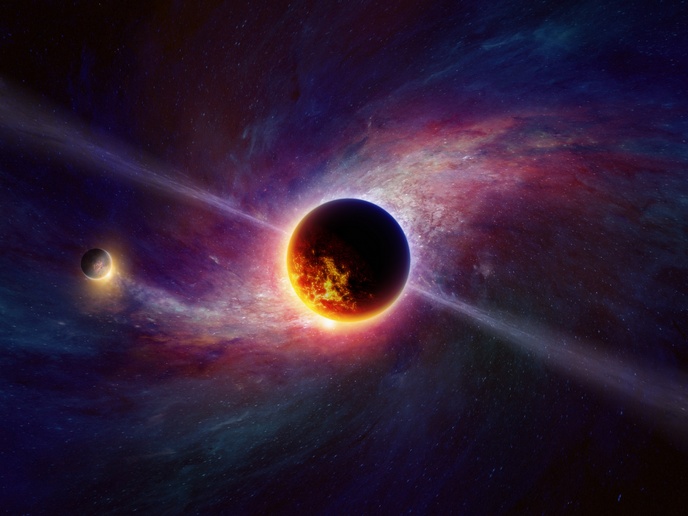Discovering an exoplanet too massive for its star
How much do we really know about the universe? Not very much, it turns out, as an international team of scientists recently confirmed. In the course of research partly supported by the EU-funded N-GINE project, they discovered a massive planet outside our solar system orbiting an ultracool M dwarf star that should be too small to host such a planet. Their findings were published in the journal ‘Science’. Planets are formed in protoplanetary discs of gas and dust surrounding newly formed stars. How big these planets can grow is determined by the amount of material in the disc. So, based on previous observations of protoplanetary discs, scientists had concluded that the relatively smaller mass of gas and dust surrounding low-mass red dwarf stars mostly precludes the formation of planets much more massive than Earth. However, the research team’s recent discovery is now challenging this theory. The astrophysicists used near-infrared spectroscopy to observe LHS 3154, an ultracool dwarf star about 51 light years away from Earth and nine times less massive than the Sun. LHS 3154 is orbited once every 3.7 days by a planet at least 13 Earth masses, which is almost the mass of Neptune. The planet-to-star mass ratio is around 100 times bigger than that of Earth’s and the Sun’s. This is the first time that such a massive planet has been found orbiting such a low-mass star, a discovery that contradicts current planet formation models.
Re-examining formation theories
“The planet-forming disk around the low-mass star LHS 3154 is not expected to have enough solid mass to make this planet [sic],” states study co-author Prof. Suvrath Mahadevan of The Pennsylvania State University (Penn State), United States, in a ‘EurekAlert!’ news release. “But it’s out there, so now we need to reexamine our understanding of how planets and stars form.” The exoplanet was spotted using an astronomical spectrograph called the Habitable Zone Planet Finder (HPF). The instrument was designed to detect potentially habitable exoplanets that orbit cool stars and that are capable of supporting liquid water on their surfaces. “Based on current survey work with the HPF and other instruments, an object like the one we discovered is likely extremely rare, so detecting it has been really exciting,” remarks Penn State graduate student and co-author Megan Delamer. “Our current theories of planet formation have trouble accounting for what we’re seeing.” Based on the team’s calculations, the exoplanet’s heavy planetary core would require a greater amount of solid material to exist in the protoplanetary disc than current models indicate. The researchers used simulations to show that the planet’s existence could be explained if the host star’s protoplanetary disc was 10 times more massive than observed. “What we have discovered provides an extreme test case for all existing planet formation theories,” notes Prof. Mahadevan. The 5-year N-GINE (Next-Generation of Interior models of (Exo)planets: Studying the interior structure of giant planets and its effect on their evolution, atmospheres and observations) project ends in 2028. For more information, please see: N-GINE project
Keywords
N-GINE, planet, exoplanet, dwarf star, LHS 3154, protoplanetary disc, low-mass star

